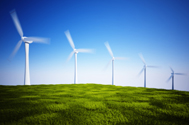The Outlook for Renewable Energy
 In December 2011 Bloomberg New Energy Finance reported that the one trillionth dollar of investment in clean energy had been spent since it began keeping records on such spending in 2004.
In December 2011 Bloomberg New Energy Finance reported that the one trillionth dollar of investment in clean energy had been spent since it began keeping records on such spending in 2004. This milestone was significant noted Bloomberg, because it happened just as negotiators and world leaders were gathering in Durban for the latest round of international climate negotiations.
A key item on the Durban agenda was the management of a fund designed to promote clean energy investment in the developing world.
Where that trillionth dollar was spent was uncertain, but most probably it happened somewhere in the developing world, said Bloomberg, where record levels of clean energy investment are taking place.
According to the firm’s latest Global Renewable Energy Market Outlook, which examines the size of the world renewable energy markets out to 2030, the most rapid growth will be seen in the rapidly developing economies of India, the Middle East, Africa and Latin America, with projected growth rates of 10-18% per year over the period 2010 to 2020,
Geographically, Europe will remain one of the biggest markets for money spent on renewable energy projects for the next three years, says the company, but with a dwindling share of world investment as European Union governments scale back clean energy support in the face of sovereign debt problems.
According to the analysis in 20 years’ time 15.7% of total energy production will come from renewable sources (including large hydro), up from 12.6% last year.
The Bloomberg report predicts that spending on new renewable energy capacity will total $7 trillion over next 20 years and the annual value of installed renewable energy capacity will double in real terms to $395bn in 2020, rising to $460bn in 2030.
With regard to technologies, Bloomberg predicts cost reductions will spur deployment of solar power, which will undergo the second-fastest percentage growth of all technologies (after offshore wind) from 51GW in 2010 to 1,137GW by 2030.
This will require significant capital - an annual average of $130bn over 2010-30 compared with $86bn in 2010. China will take over the lead in renewable energy asset finance from Europe in 2014 with an annual spend of just under $50bn. The US and Canada are also expected to see no slowdown in project construction, together hitting $50bn of investment in 2020.
The wind sector - both on and offshore - will continue to expand, attracting $140bn in 2020 and $206bn per annum by 2030 (2010: $82bn). New areas of growth will come from European offshore wind and emerging markets in Latin America, Turkey, Africa and Australia.
In those countries, a favourable combination of good resources and underlying power demand growth will combine with a desire to diversify the energy mix.
The bioenergy sector will see renewed activity, with the commercialisation of second-generation technologies. Investment in biofuels, biomass and waste-to-energy is projected to increase from $14bn in 2010 to $80bn in 2020 and then remain level over the next decade.
Guy Turner, director of commodity market research at Bloomberg New Energy Finance, said “These results indicate that last year’s record renewable energy investment was no one-off despite the recent economic gloom.”
Big winners over the next 20 years will be the emerging renewable energy hubs in Latin America, Asia, the Middle East and Africa - by 2020 the markets outside of the EU, US, Canada and China will account for 50% of global annual investment in renewable energy capacity.”
“The trillionth-dollar milestone shows that the world is not waiting for a deal on climate in order to start turning the super-tanker away from fossil fuels,” said Bloomberg New Energy Finance chief executive Michael Liebreich.
“Another five years of investment growth at the same compound rates, and the world will have broken the back of emissions growth,” he added.
As capital costs for wind, solar, geothermal, marine, hydro and bioenergy continue to fall, and as energy smart technologies remake the world’s grids, clean energy investment flows are expected to maintain their long-term rise, supported by a network of policies and initiatives around the world, he noted.
You can return to the main Market News page, or press the Back button on your browser.

